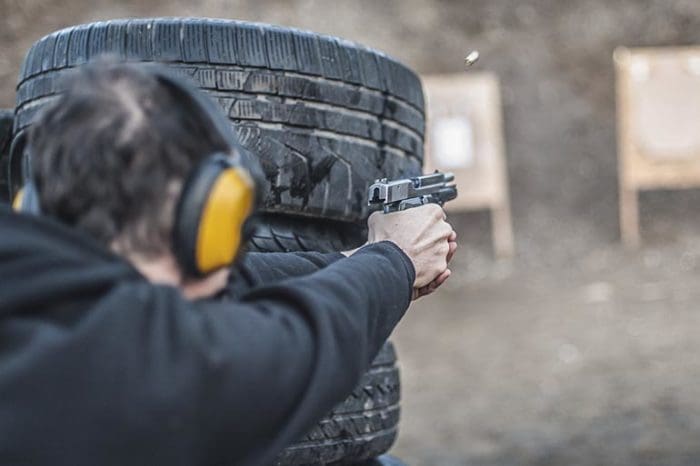There is nothing more frustrating than grinding to halt because your gear has fallen apart, especially in a training class. How many of us have been on the ground trying to find that itty-bitty piece of hardware in a sea of brass?
The Carnage
I’ve seen plenty of gear-related problems over the years. In a recent concealed carry class, we had a holster come apart, literally. We’ve had a variety of issues — lots of bad magazines — but luckily, we caught most of them before they became real problems.
In one incident, I had the front sight come loose on my pistol. I’m actually glad it was the sight and not my shooting. The damn thing was listing and I finally asked myself, is it me, or is my sight post really leaning?
It’s virtually impossible to work with equipment that doesn’t have some type of fastener. No matter how tight you make it, whether or not you used Loctite, or whether the proper torque was applied, periodic maintenance is required. Especially if you shoot often.
The Basic Tools
One of the best tools I’ve ever put in a range bag is a small screwdriver with the various spare bits stored in the body. I love this tool. It has done me right over the years.
No matter how small your range bag, there’s always room for one of those. In addition, a small tube of thread locker will help ensure you don’t have to repeat the process anytime soon. While there are many tools you could keep on hand, these are the minimum, in my opinion.
The Maintenance Interval
When it comes to your holsters and magazine carriers, I suggest checking all the hardware once a month. Some may go so far as to recommend using thread locker on all of your hardware. For some gear, that’s required; for others, not so much.
Learn what causes the hardware to come loose first. If you apply a thread locker to your concealed carry gear, go with the lightest bond. You don’t want permanence; you want security.
At the end of a high-intensity class with lots of draw stroke repetitions, do yourself a favor and check the screws in your gear. If they’re loose, hopefully you’ve avoided a mishap. Losing hardware can land you in a tight spot; lots of folks have spare guns or extra magazines, but how many carry more than one holster? Checking your hardware is a simple solution.
Big Picture Logistics
There’s a saying that goes, “Amateurs argue tactics, and professionals argue logistics.” Often in my classes, students with niche or exotic guns find themselves in a pickle with their gear. Other students will go out of their way in an effort to help, but it’s hard to help you when your gear is so far out on the fringe.
I carry spare equipment and gear to every class and have loaned it out many times. But more than once, I couldn’t help a student with a problem because our gear didn’t match what they’d brought. There’s something to be said for using widely owned guns and gear that can be easily switched out with what others are using.
Preparation can go a long way, as can spare parts and hardware. Put some thought into your periodic and mandatory maintenance routines, as well as what hardware and maintenance gear you bring with you when you train. It will save you time, trouble, and you’ll be glad you did.
Jeff Gonzales is a former US. Navy SEAL and preeminent weapons and tactics instructor. He brings his Naval Special Warfare mindset, operational success and lessons learned unapologetically to the world at large. Currently he is the Director of Training at The Range at Austin. Learn more about his passion and what he does at therangeuastin.com.
